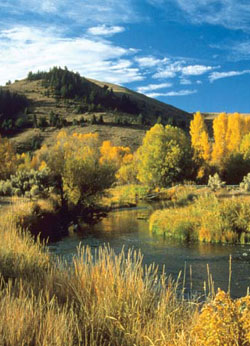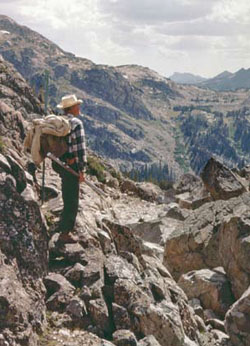Montana: Stories of the Land
Companion Website and Online Teacher's Guide
Chapter 21 - A People's Constitution, 1972
Chapter 1 - Montana: Where the Land Writes History
Chapter 2 - People of the Dog Days
Chapter 3 - From Dog Days to Horse Warriors
Chapter 4 - Newcomers Explore the Region
Chapter 5 - Beaver, Bison, and Black Robes
Chapter 6 - Montana's Gold and Silver Boom
Chapter 7 - Two Worlds Collide
Chapter 8 - Livestock and the Open Range
Chapter 9 - Railroads Link Montana to the Nation
Chapter 10 - Politics and the Copper Kings
Chapter 11 - The Early Reservation Years
Chapter 12 - Logging in the "High Lonesome"
Chapter 13 - Homesteading This Dry Land
Chapter 14 - Towns Have Lives, Too
Chapter 15 - Progressive Montana
Chapter 16 - Montana and World War I
Chapter 17 - Montanans on the Move
Chapter 18 - The Great Depression Transforms Montana
Chapter 19 - World War II in Montana
Chapter 20 - Building a New Montana
Chapter 21 - A People's Constitution
Chapter 22 - Living in a New Montana
Educator Resources
Takeaways
-
Inspired by reading specialist Tammy Elser, who was in turn inspired by SKC graduate Taylor Crawford, we've created a "Takeaway" bookmark for every chapter of Montana: Stories of the Land. Before starting a chapter, print and cut out these bookmarks and distribute them to your students. Ask them to use the Takeaway to summarize the GIST of what they learn from reading assigned sections of the chapter. Remind them that they don't have much room, so they'll need to think before they write down the most important idea they want to take away from the section. Learn a little more about the GIST strategy.
-
Even though we've created Takeaways for every chapter, we don't recommend you have your students complete a Takeaway for every section of every chapter they read. That would be exceedingly tedious. However, used appropriately, they can be a useful tool for encouraging reflection and teaching students how to summarize information.
Websites and Online Lesson Plans
-
New! The Montana 1972 Constitutional Convention (Designed for grades 11-12) This intensive dive into Montana’s constitutional convention asks students to analyze and compare the preambles of both the 1889 and 1972 Montana Constitutions before exploring how the 1972 constitution came to be, researching some of the major people and events of the 1972 Constitutional Convention, and presenting their findings in a digital “yearbook.” While the full lesson takes eight to eleven 50-minute class periods, parts can be used independently.
-
The Montana Law Library has posted the entire proceedings of the constitutional convention online. Volume 1 includes brief biographies of each delegate, an alphabetical list of committee assignments, a map of delegate districts, and a list of delegates by district.
-
Article X of the Montana State Constitution and Indian Education for All is a high school lesson plan created by the Indian Education Unit of the Montana Office of Public Instruction.
-
Creative Educator has a lesson plan that asks students to examine the U.S. constitution and write a classroom constitution.
-
Download the "Guide to the Montana Legislature" at the Montana State Legislature website.
Videos or DVDs
-
For This and Future Generations - 60 minutes. (A VHS tape of this film can also be borrowed from the Montana Historical Society.)
-
Chapter Eight, "Montana's Quiet Revolution," (23 minutes) of Montana Mosaic: 20th Century People and Events. (Site includes links to both User Guides with discussion questions and videos.)
-
At the time of the constitutional convention, Earl Barlow served as Director of Indian Education in the office of the State Superintendent of Public Instruction. In this series of video clips he recounts how Montana became the only state to have a constitutional amendment stating that “[Montana] recognizes the distinct and unique cultural heritage of American Indians” and “is committed in its educational goal to the preservation of their cultural integrity.” "Learning of the Constitutional Convention" (2:41), "Putting Indian Voices into the 1972 Constitutional Convention" (5:28), "Addressing the Convention" (5:14), and "Putting Words into Action" (6:12).
Possible Field Trips: View the Map
-
Montana State Capitol, Helena
Chapter 21 Test and Answer Keys Page
The tests and answer keys are password protected.
You can contact us to receive the password:
- Martha Kohl - call (406) 444-4790 or email mkohl@mt.gov
- Melissa Hibbard - call (406) 444-4741 or email Melissa.Hibbard@mt.gov
Or, if you used the old system, the original username is now the new password. You will be asked for this case-sensitive password every time you open a new document.
Alignment to ELA Common Core Standards
Alignment to Content Standards and Essential Understandings Regarding Montana Indians (EU)


